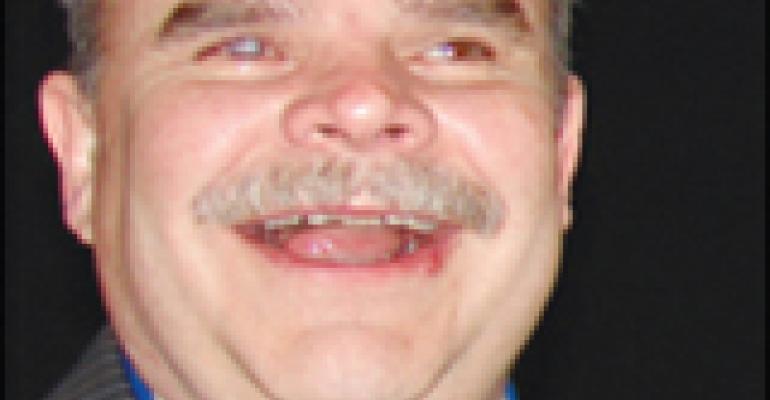Consumer demand for restaurant brands is re-energizing a 69-year-old federal program that trains blind and visually impaired entrepreneurs to manage foodservice operations that ring up hundreds of millions of dollars in sales at federal buildings.
The Randolph-Sheppard Act gives blind merchants first rights to operate any vending, snack bar or cafeteria in U.S. government buildings.
But what originally started as a way to help blind Americans earn a living by selling candy and cigarettes in courthouse basements has become a $456 million-a-year contract foodservice business.
Today visually impaired operators run full-scale cafeterias and sign licensing agreements with such major franchisors as Dunkin’ Brands and Yum! Brands to bring their concepts into government buildings.
Partnering with restaurant operators helps blind merchants expand their businesses while also giving those restaurants access to more customers, supporters of the federal program say.
“The restaurant industry has changed significantly in the last 20 years,” said Kevan Worley, president of Worley Enterprises in Colorado Springs, Colo., which manages a cafeteria for military personnel at nearby Fort Carson. Worley is also president of the National Association of Blind Merchants, an arm of the National Federation of the Blind that assists visually impaired entrepreneurs in the Randolph-Sheppard training program.
Today’s federal offices are often surrounded by outside food options, so to keep workers from leaving their buildings, blind vendors have been pursuing restaurant companies to bring their brands into the vendors’ operations, said Worley, who has been blind from birth.
“Today there is a Starbucks on every corner,” he said. “The employees are not a captive audience anymore. Federal employees telecommute, and jobs are outsourced. There have been changes in the dynamic and in the demographic needs of our customers.”
As a result of the Randolph-Sheppard Act, more than 2,700 blind vendors are running 3,100 foodservice locations, from vending machines or snack bars to cafeterias with grills, hoods and fryers. Blind vendors also have been developing relations with franchisors.
“Dunkin’ Brands was the first one to step up and say this could be a win-win,” Worley said.
The Canton, Mass.-based franchisor of more than 7,200 Dunkin’ Donuts shops in 29 countries partnered last year with blind vendor Nicky Gacos to open a shop in the U.S. Postal Service’s international bulk mail facility in Jersey City, N.J. More than 3,000 people work there.
“Restaurants are looking for noncompetitive locations in office buildings and federal buildings, and branding has become very important to anyone in the business,” Gacos said.
He owned and managed restaurants in Colorado and New Jersey before going through the Randolph-Sheppard program. He lost his sight when he was 19 years old. Dunkin’ also has offered Gacos and his staff online training classes on customer service and marketing.
“It’s a great relationship,” he said.
“In partnership with savvy and dedicated Randolph-Sheppard vendors, Dunkin’ Donuts has been able to establish spectacularly successful locations in state and federal facilities in New Jersey, Delaware and the District of Columbia,” Kevin Houser, vice president of development for the franchisor, said earlier this year before the opening of a Dunkin’ Donuts within the Urban Cafe, a foodservice operation in the U.S. Department of Housing and Urban Development in Washington.
The National Association of Blind Merchants has been pursuing restaurant chains and vendors to bolster the foodservice operations of blind entrepreneurs. The NABM also conducts training and networking opportunities. The group hosts an annual leadership conference for blind foodservice operators.
Having the first right of refusal on a snack bar or cafeteria in a federal program is giving blind operators some leverage to negotiate and attract chains, Worley said.
“We can say we have the priority, and you really should be partnering with us,” he said. “Together we can work to create some new positioning and profitable ventures. It helps sell the program.”
At times vendors still have to overcome societal misconceptions about blind workers, Worley noted.
“When we go to franchisees, some ask how a blind person can do this,” he said. “We educate them. We may not make the doughnuts, but surely a blind person can load them in a case. Most of us have foodservice certificates and degrees.”
Mandated by the federal government, local and state agencies carry out a foodservice training program for the blind.
Mike Feeney, owner-operator of the employee cafeteria at the Desert Schools Federal Credit Union in Phoenix, trained for a year with Arizona’s Business Enterprise Program. He took over the foodservice program in the credit union three years ago. He runs a smaller operation than is typical for blind vendors. With two employees, his cafeteria generates about $175,000 a year in sales.
Feeney lost his sight to diabetes when he was 28. He had worked in the office of a landscape company, but the Randolph-Sheppard program gave him a chance at ownership and to improve his income, he said.
Feeney mans the cash register. Most of his customers are regulars who know Feeney is blind and know to tell him what they are buying for him to ring up their items. He has an electronic device that can identify currency for him but he rarely uses it, relying instead on customers to describe the bills they give him.
“People here are very honest,” Feeney says. “I have not had any problems.”
Even blind vendors with large-scale operations actively work on site, said Gacos in New Jersey.
“This is not a program where someone like Dunkin’ comes in and the blind vendor says thank you and sits at home and collects checks,” Gacos said. “It’s an employment program for work and for jobs. The blind operator has to be out and present.”





